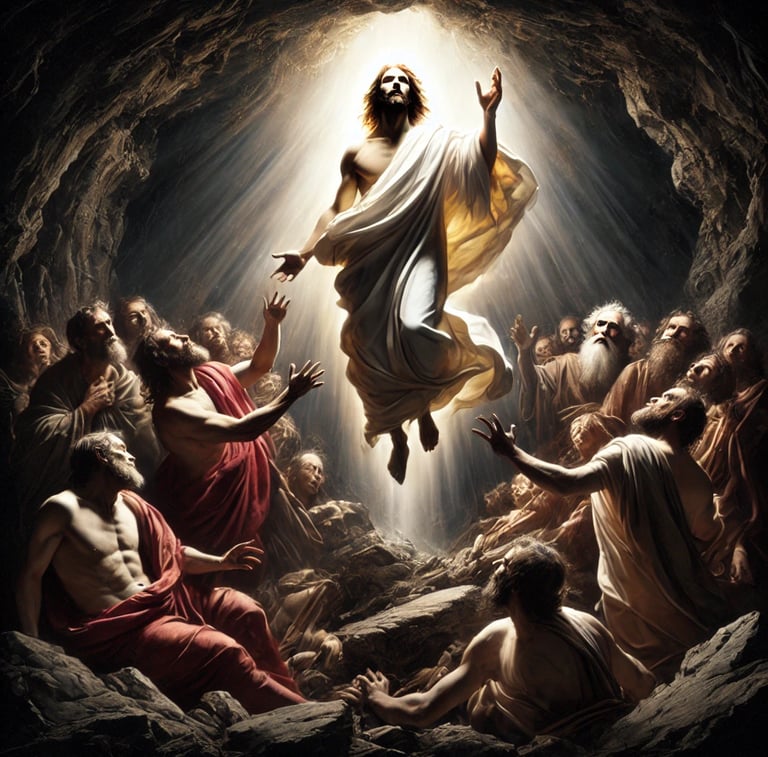Holy Saturday is silent.
The altar is bare, the tabernacle empty, and the Church waits. Yet behind that silence, beneath the stillness of the tomb, a cosmic battle has already been won—and a divine descent is underway. This is the moment the Church has long called the Harrowing of Hell.
What Is the Harrowing of Hell?
The Harrowing refers to the mysterious event, not described in detail in Scripture but echoed through centuries of Christian belief, in which Christ descended into the realm of the dead (Sheol, or Hades) between His Crucifixion and Resurrection. It is the fulfillment of the line we recite in the Apostles’ Creed: “He descended into hell.”
This was not the hell of the damned, but the waiting place of the righteous dead—Adam, Eve, Abraham, David, the prophets, and all who died in friendship with God, yet still awaited redemption. Their Redeemer had come.
Christ, the Conqueror
Imagine it:
The crucified Christ, bearing the marks of His Passion, radiant with divine glory, steps into the land of shadows. He is not defeated. He is not grieving. He comes as a warrior-king, His Cross raised like a banner of victory.
The Eastern tradition beautifully portrays this scene in icons: Christ standing on the shattered gates of hell, reaching out His pierced hands to lift Adam and Eve from their graves. Iron locks are broken, chains snapped, the abyss no longer eternal.
Hell could not hold Love.
Theology of the Descent
The Catechism of the Catholic Church teaches:
“By the expression ‘He descended into hell,’ the Apostles’ Creed confesses that Jesus did really die and through his death for us conquered death and the devil ‘who has the power of death’ (Heb 2:14).” (CCC 636)
Christ’s descent proclaims a cosmic truth: that no soul is forgotten. His saving work reaches beyond time, space, and even death itself. It is not just a rescue—it is a proclamation of victory to the captives.
Echoes in Art and Liturgy
In sacred art, the Harrowing of Hell is often a burst of light in a dark world. The doors of the underworld are flung open. The ancient serpent is bound. The saints arise.
In the Byzantine tradition, this event is celebrated on Holy Saturday with a liturgy so triumphant, you’d think Easter had already begun. And in the West, it lives on through poetry and mysticism. Even Dante, in his Inferno, places the memory of Christ’s descent as a tremor that once shook the underworld’s walls.
Why It Matters Today
The Harrowing of Hell isn’t just about history—it’s about hope.
It tells us that no night is so dark that Christ will not enter it. No grave is so sealed that He cannot break it open. No soul is so lost that it cannot be found by the mercy of God.
On the days we feel trapped in our own tombs of sin, shame, or despair, the Harrowing reminds us:
He comes for us, too.




